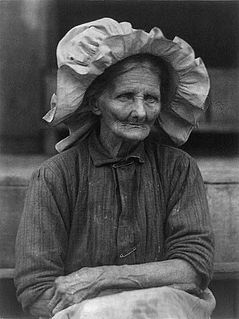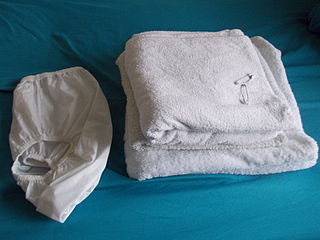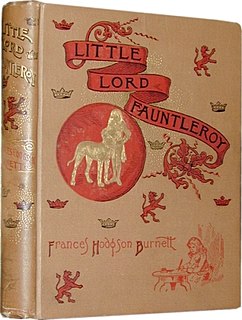 W
WChildren's clothing or kids' clothing is clothing for children who have not yet grown to full height. Children's clothing is often more casual than adult clothing, fit for play and rest.
 W
WAn Alice band is a type of hair accessory. It can consist of flexible horseshoe-shaped plastic or elastic material forming a loop. The band is designed to fit over the head and hold long hair away from the face, but let it hang freely at the back.
 W
WA baby bumper headguard cap, also known as a falling cap, or pudding hat, is a protective hat worn by children learning to walk, to protect their heads in case of falls.
 W
WA babygrow, babygro, sleepsuit, or sleep suit in British English is a one-piece item of baby clothing with long sleeves and legs used for sleep and everyday wear. They are typically made from cotton and closed with snaps, although they may also be made from fleece or closed with zips. The feet are often enclosed, but they may be footless. They are distinguished from bodysuits by the fact that they have legs and long sleeves.
 W
WA bib is a garment worn hanging from the neck on the chest to protect clothing from accidentally spilled food. Bibs are frequently used by young children, especially infants, but also by some adults. Bibs are also worn when consuming certain "messy" foods. In addition, bibs are used for infants when they drool a lot, for example when they are teething.
 W
WThe blanket sleeper is a type of especially warm sleeper or footie pajama worn primarily during the winter in the United States and Canada. The garment is worn especially by young children.
 W
WBonnet has been used as the name for a wide variety of headgear for all genders—more often women—from the Middle Ages to the present. As with "hat" and "cap", it is impossible to generalize as to the styles for which the word has been used, but there is for all genders a tendency to use the word for pop styles in soft material and lacking a brim, or at least one all the way round, rather than just at the front. Yet the term has also been used, for example, for steel helmets. This was from Scotland, where the term has long been especially popular.
 W
WBreeching was the occasion when a small boy was first dressed in breeches or trousers. From the mid-16th century until the late 19th or early 20th century, young boys in the Western world were unbreeched and wore gowns or dresses until an age that varied between two and eight. Various forms of relatively subtle differences usually enabled others to tell little boys from little girls, in codes that modern art historians are able to understand.
 W
WA Buster Brown suit was a very popular style of clothing for young boys in the United States during the early 20th century. It was named after the comic strip character Buster Brown, created in 1902 by Richard Felton Outcault.
 W
WA cloth diaper or a cloth nappy or real nappy is a reusable diaper made from natural fibers, man-made materials, or a combination of both. They are often made from industrial cotton which may be bleached white or left the fiber’s natural color. Other natural fiber cloth materials include wool, bamboo, and unbleached hemp. Man-made materials such as an internal absorbent layer of microfiber toweling or an external waterproof layer of polyurethane laminate (PUL) may be used. Polyester fabrics microfleece or suedecloth are often used inside cloth diapers as a "stay-dry" wicking liner because of the non-absorbent properties of those synthetic fibers.
 W
WA coif is a close fitting cap worn by both men and women that covers the top, back, and sides of the head.
 W
WA diaper /ˈdaɪpə(r)/ or a nappy is a type of underwear that allows the wearer to urinate or defecate without using a toilet, by absorbing or containing waste products to prevent soiling of outer clothing or the external environment. When diapers become wet or soiled, they require changing, generally by a second person such as a parent or caregiver. Failure to change a diaper on a sufficiently regular basis can result in skin problems around the area covered by the diaper.
 W
WLittle Lord Fauntleroy is a novel by the English-American writer Frances Hodgson Burnett, her first children's novel. It was published as a serial in St. Nicholas Magazine from November 1885 to October 1886, then as a book by Scribner's in 1886. The illustrations by Reginald B. Birch set fashion trends and the novel set a precedent in copyright law when Burnett won a lawsuit in 1888 against E. V. Seebohm over the rights to theatrical adaptations of the work.
 W
WA gymslip is a sleeveless tunic with a pleated skirt most commonly seen as part of a school uniform for girls. The term "gymslip" primarily refers to the school uniform; otherwise the term pinafore dress or jumper dress is usually preferred.
 W
WKkachi durumagi is a children's colorful overcoat in hanbok, traditional Korean clothing, which was worn on Seollal, New Year's Day in the Lunar calendar. It was worn mostly by young boys and literally means "a magpie's overcoat". The clothes is also called obangjang durumagi which denotes "an overcoat of five directions". It was worn over jeogori and jokki while the wearer could put jeonbok over it. Kkachi durumagi was also worn along with headgear such as bokgeon, hogeon for young boys or gulle for young girls.
 W
WLittle Lord Fauntleroy is a novel by the English-American writer Frances Hodgson Burnett, her first children's novel. It was published as a serial in St. Nicholas Magazine from November 1885 to October 1886, then as a book by Scribner's in 1886. The illustrations by Reginald B. Birch set fashion trends and the novel set a precedent in copyright law when Burnett won a lawsuit in 1888 against E. V. Seebohm over the rights to theatrical adaptations of the work.
 W
WA Peter Pan collar is a style of clothing collar, flat in design with rounded corners. It is named after the collar of Maude Adams's costume in her 1905 role as Peter Pan, although similar styles had been worn before this date.
 W
WA romper suit, or just romper, is a one-piece or two-piece combination of shorts and a shirt. It is also known as a playsuit, its generally short sleeves and pant-legs contrasting with the typical long ones of the adult onesie or jumpsuit.
 W
WA sailor dress is a child's or woman's dress that follows the styling of the sailor suit, particularly the bodice and collar treatment. A sailor-collared blouse is called a middy blouse. In early 20th-century America, sailor dresses were very popularly known as Peter Thomson dresses after the former naval tailor credited with creating the style.
 W
WA sailor suit is a uniform traditionally worn by enlisted seamen in a navy or other governmental sea services. It later developed into a popular clothing style for children, especially as dress clothes.
 W
WA school uniform is a uniform worn by students primarily for a school or otherwise educational institution. They are common in primary and secondary schools in various countries.
 W
WSchool uniform is a practice which dates to the 16th century in England. Charity schools such Christ's Hospital, founded in 1552 in London, were among the first schools to use a uniform for their students. The earliest documented proof of institutionalised use of a standard academic dress dates back to 1222 when the Archbishop of Canterbury ordered the wearing of the cappa clausa.
 W
WA skeleton suit was an outfit of clothing for small boys, popular from about 1790 to the late 1820s, after which it increasingly lost favor with the advent of trousers. It consisted of a tight short- or long-sleeved coat or jacket buttoned to a pair of high-waisted trousers. Skeleton suits are often described as one of the earliest fashions to be specifically tailored for children, rather than being adult fashions sized down. Previously young boys wore dresses until they were breeched, or put into trousers.
 W
WA T-bar sandal or T-bar shoe is a closed, low-cut shoe with two or more straps forming one or more T shapes.